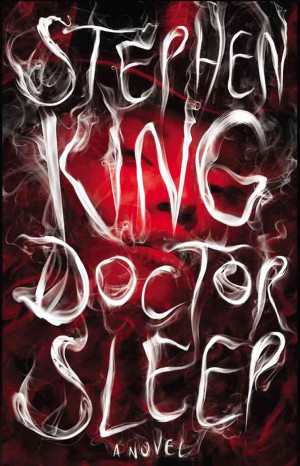
But “Doctor Sleep” is not your typical King book. It’s a rare sequel for him, and a continuation of perhaps his most popular book. “The Shining,” published in January 1977, was only King’s third novel, after 1974’s “Carrie” and 1975’s “Salem’s Lot.” While he has written scarier books (1986’s “It” is literally it), “The Shining” is the book he is most identified with, and the one that transformed him into a fearful household name. Stanley Kubrick’s 1980 motion picture adaptation cemented that reputation.
“The Shining” revolved around the Torrance family upon their moving into the Overlook Hotel in Colorado where the troubled father, Jack, was to be the winter caretaker. But the Overlook is home to spirits that lead Jack to threaten wife Wendy and, most especially, son Danny. Why? Because Danny has budding extra sensory powers—known as the titular shining—and the ghosts want him. By novel’s end, Jack and the Overlook are destroyed as Wendy and Danny escape.
“Doctor Sleep” picks up shortly after that, with the surviving Torrances now in Florida: “The Overlook wasn’t done with him. At least some of its vengeful spirits had followed him all the way to Florida.” Danny learns to deal with them—but then his life becomes troubled as well, as he battles alcoholism that stretches for years.
But after relocating in the tiny town of Frazier, New Hampshire, Danny—now called Dan—finds a measure of peace by using his powers to help the elderly in a hospice die quietly. For this, he gains the nickname “Doctor Sleep.” He notices something else as well: “The shining was back, and strong. The question was, why now?”
Fascinating answer
King’s answer is long, detailed and fascinating. In a nearby town called Anniston, a girl named Abra Stone begins to exhibit signs of possessing the shining—but on a level never before seen. Even as her parents attempt to deal with her gift, others have noticed Abra.
They are called the True Knot, and while they used to be people, they have since been turned into parasitic creatures able to live hundreds of years so long as they partake of the “steam”—the pain suffered by children with the shining. Disguised as wanderers in mobile homes across the country, they abduct, torture and kill gifted children. And Abra is now the primary target of their leader, the powerful and malevolent Rose the Hat.
Somehow, Dan and Abra connect because of their abilities and soon, “Doctor Sleep” launches into a perilous plunge through the True Knot’s attempts to capture Abra and Dan’s attempts to prevent it. Along the way, secrets are revealed and fears are faced. King keeps the readers guessing on the way to a complex, surprising ending.
While readers are not required to have read “The Shining” before tackling this book, it really does enhance the reading experience as the newer book calls back frequently to the older one.
Different versions
Note that “Doctor Sleep” follows the book, not the movie version of “The Shining.” The two versions are actually very different from one another.
“Doctor Sleep” is scary in a very subtle, controlled way. While “Doctor Sleep” is a monster of a book that covers 35 years in Dan’s life, the plot itself is focused and straightforward. King gets all the little details down and his prose, as usual is impeccable. King is known for his meticulous mixing of the mundane and the mysterious, and that is at play here as well. There are enough twists to satisfy the most demanding reader—with one that is really a killer revelation that is just a little too convenient.
What impresses most about “Doctor Sleep” is the character work. Rose the Hat is a quality villain who raises so many questions. Abra is a darling creation who recalls King’s most enduring female character, Carrie White from “Carrie.” But it is Dan, with his inner struggle for redemption, who wins over the reader. Filling the pages with issues and elements which are clearly personally important to him, King laces “Doctor Sleep” with the themes of weakness and advantage, of humanity and inhumanity, the things that haunt us. “Except for the ghosts, of course,” Dan thinks. “They never left.” All that is why Stephen King’s “Doctor Sleep” is a worthy sequel to “The Shining”— a book as haunting as it is touching.
Available in hardcover at National Book Store.











































